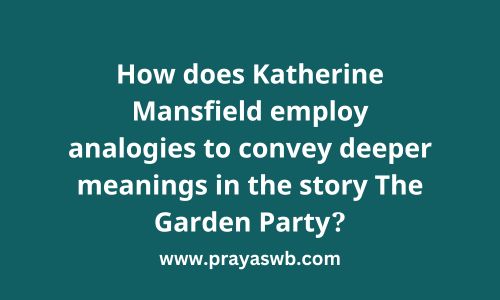How does Katherine Mansfield employ analogies to convey deeper meanings in the story The Garden Party

When analyzing the text, analogies for each and every context can be found within the story. The highlights of the positive characters are in the first half of the narration where everything is “perfect”. The second half woven with the “dark”, is crucial to the theme of the story. The difference between the Sheridan’s world and that of the poor is conveyed in strong visual imagery. The reader follows the images and the mood of the Sheridan’s residence where even the weather is “ideal”, the skies are “blue” and “without a cloud”. The nature itself seems to dance with happiness, and “hundreds, yes, literally hundreds (of roses), have come out in a single night to decorate the garden as it is “veiled with a haze of light gold”. The perfectness of this opening picture can be contrasted with Laura’s visit to the village, where the sky is “pale”, lane is “smoky and dark” the cottages “mean” with a “flicker of light” and “painted a chocolate brown”. The village was “the greatest possible eyesome” and their garden patches have “nothing but cabbage stalks, sick hens and tomato cans”. The contrast of the images is so much; it is hard to beleive both of them exist in the same world, let alone in close proximity.
Read More – Explore the symbolism of the Sheridan family’s Garden in the story